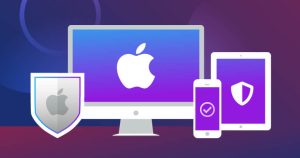As our world becomes increasingly interconnected and reliant on digital technology, the importance of cybersecurity cannot be overstated. Cyber threats such as malware, ransomware, phishing attacks, and data breaches are constantly evolving, posing serious risks to individuals and businesses alike. To help you safeguard your digital assets, here are 7 best practices for strengthening your cybersecurity defense.
- Use strong and unique passwords: Weak passwords are a common entry point for cybercriminals. Avoid using easily guessable passwords, such as “password” or “123456,” and instead use strong, unique passwords for each of your accounts. Include a combination of upper and lower case letters, numbers, and special characters to make it harder for hackers to crack your passwords.
- Enable two-factor authentication (2FA): Two-factor authentication adds an extra layer of security to your accounts by requiring a second form of verification, typically through a text message, email, or authenticator app. Enable 2FA wherever possible to add an additional barrier against unauthorized access to your accounts.
- Keep your software and devices up-to-date: Regularly update your operating system, software applications, and devices to ensure you have the latest security patches and bug fixes. Cybercriminals often target known vulnerabilities in outdated software, so keeping everything up-to-date can help protect against known security risks.
- Be cautious with emails and links: Be wary of suspicious emails, especially those with unexpected attachments or links. Avoid clicking on links or downloading attachments from unknown sources, and be cautious of email messages that ask for sensitive information or seem too good to be true. Verify the authenticity of the sender and the content before taking any action.
- Practice safe browsing habits: When browsing the internet, be cautious of websites that are unsecured or seem suspicious. Stick to reputable websites and avoid clicking on pop-up ads or downloading files from unfamiliar websites. Be careful when sharing personal information online and be mindful of the websites you visit to minimize the risk of falling victim to cyber-attacks.
- Back up your data regularly: Regularly back up your important data and files to a secure location, such as an external hard drive or a cloud storage service. This can help you recover your data in case of a ransomware attack or other data loss incidents. Make sure to test your backups to ensure they can be successfully restored if needed.
- Educate yourself and your employees: Stay informed about the latest cyber threats and educate yourself and your employees on best practices for cybersecurity. Provide training on how to identify and respond to phishing attacks, how to create strong passwords, and how to use 2FA. Regularly update your knowledge and stay vigilant against emerging cyber threats.
In conclusion, cybersecurity is a critical aspect of our digital lives, and it’s important to take proactive steps to protect yourself and your business from cyber threats. By following these best practices, including using strong and unique passwords, enabling two-factor authentication, keeping your software and devices up-to-date, being cautious with email and links, practicing safe browsing habits, regularly backing up your data, and educating yourself and your employees, you can strengthen your cybersecurity defense and minimize the risk of falling victim to cyber-attacks. Stay vigilant, stay informed, and prioritize cybersecurity in today’s digital landscape.






